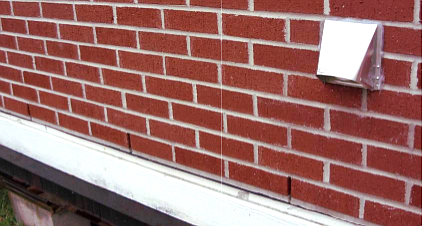Mould Resistance and Indoor Air Quality
Masonry wall systems offer defined water management strategies that keep your home drier and prevent mould.
Masonry wall systems offer defined water management strategies that keep your home drier and prevent mould.

Health Canada estimates that Canadians spend almost 90 per cent of their time indoors, underlining the importance of good indoor air quality in keeping Canadians healthy. Air quality can be affected by a number of variables, with one of the most common contributors being mould.
In a test by the National Association of Home Builders (“Moisture Performance Comparison of Typical Residential Wall Assemblies“), researchers found that “brick veneer performed significantly better” in moisture resistance when compared to wood studs and wood-based sheathings, and were shown to be at around 16% drier than unvented stucco walls under winter conditions.1
Brick and stone veneers are designed with an air space of approximately 1 inch that allows water to evaporate or seep down though the weep holes at the base, so moisture doesn’t get trapped. Unlike some other construction materials, neither brick, block or stone provide food for mould, which can prevent mould from spreading throughout the building.2
Conversely, the increased use of materials such as vinyl or metal siding and exterior insulated finishing systems (EIFS) in residential communities may contribute to moisture accumulation in the wall systems and contribute to mould growth in two ways: by allowing water penetration of the wall system and by inhibiting the evaporation of moisture to the exterior. A properly designed masonry drainage wall system allows moisture to naturally drain away so the moisture never penetrates the vapour/air barrier.

U.S. Green Building reports,
“Indoor air quality can be 10 times worse than outdoor air on smoggy days in big cities. Of all the chemicals that EPA regulates, only two are more prevalent outdoors than inside our homes and schools. This is a quiet epidemic brewing right under our noses. As the complexity of houses, especially with the dawn of synthetic products, increase, so do the risks to human health.”
This has led to rising concerns about the air quality of our buildings and the health of those who live and work in them. Sick Building Syndrome, or SBS, is a condition that has resulted in labour disputes, healthcare concerns and new building construction standards that require air quality control methods and environmental building materials.
A World Health Organization report into the syndrome of Sick Buildings (SBS) suggested that up to 30% of new and remodeled buildings worldwide may be linked to symptoms of SBS. Most of the sick building syndrome is related to poor indoor air quality.
The Canadian Centre for Occupational Health and Safety reports that Indoor Air Quality problems may arise from Indoor air contaminants – chemicals, dusts, moulds or fungi, bacteria, gases, vapours, odours. “Many office workers will spend their entire working day inside buildings. People working indoors often experience symptoms such as headaches, shortness of breath, coughing or nausea just to mention a few.”
While masonry construction for a building can improve air quality with increased energy efficiency and temperature and humidity control, a strong contribution to the health of our buildings and their occupants is low out-gassing and mould resistance.
See article: Air Quality and Quality of Life: Masonry Promotes Health for more information.
1. “If You Hate Mould, You’ll Love Brick.” Insist on Brick. The Brick Industry, n.d. Web. <http://www.insistonbrick.com/assets_html/learn-more/node01/index.php>.
2. “Fungal Mould Resistance Testing (FMRT) of Common Building Materials, According to MIL-STD 810E.” Masonry Canada. Spring 2004